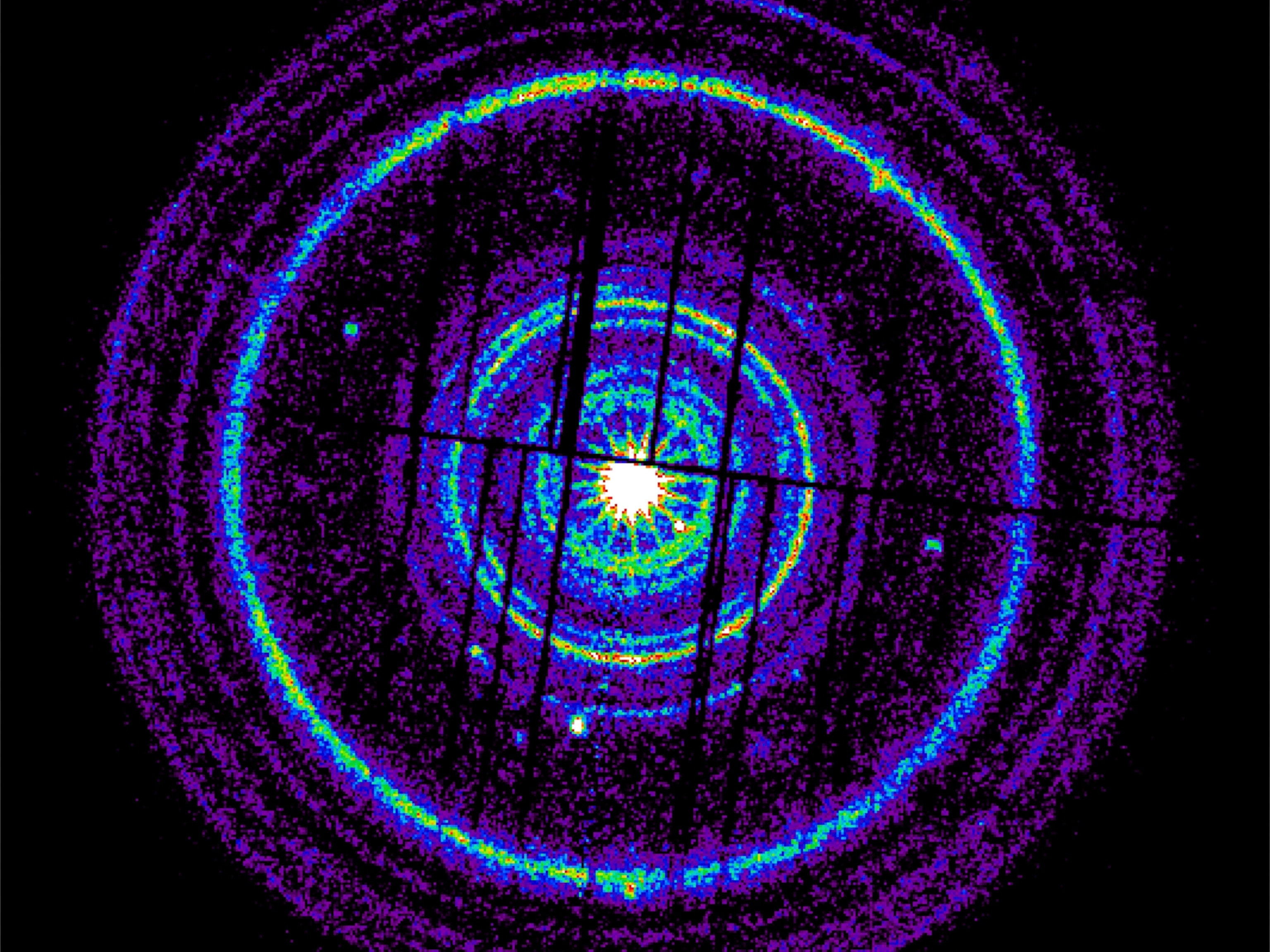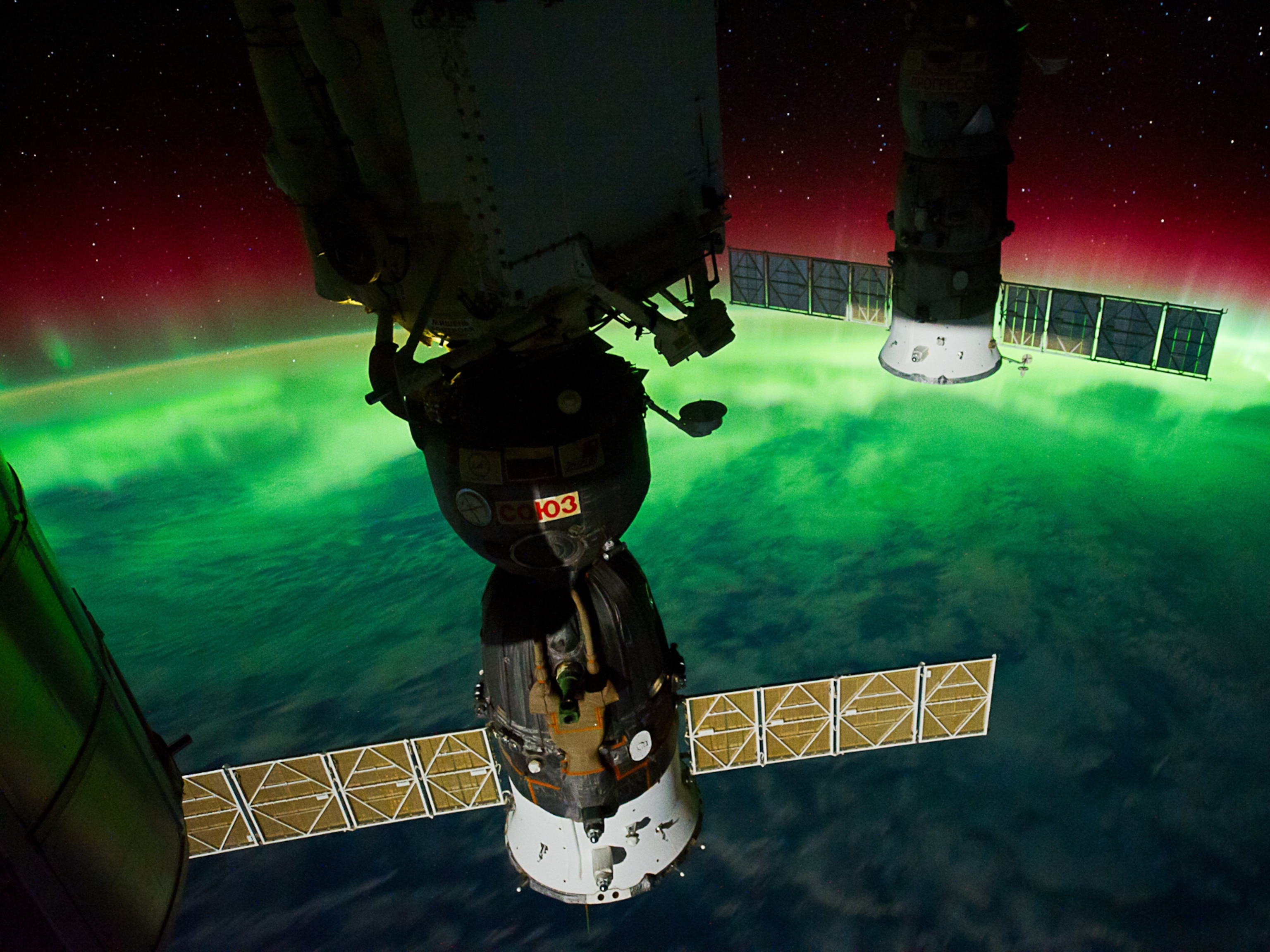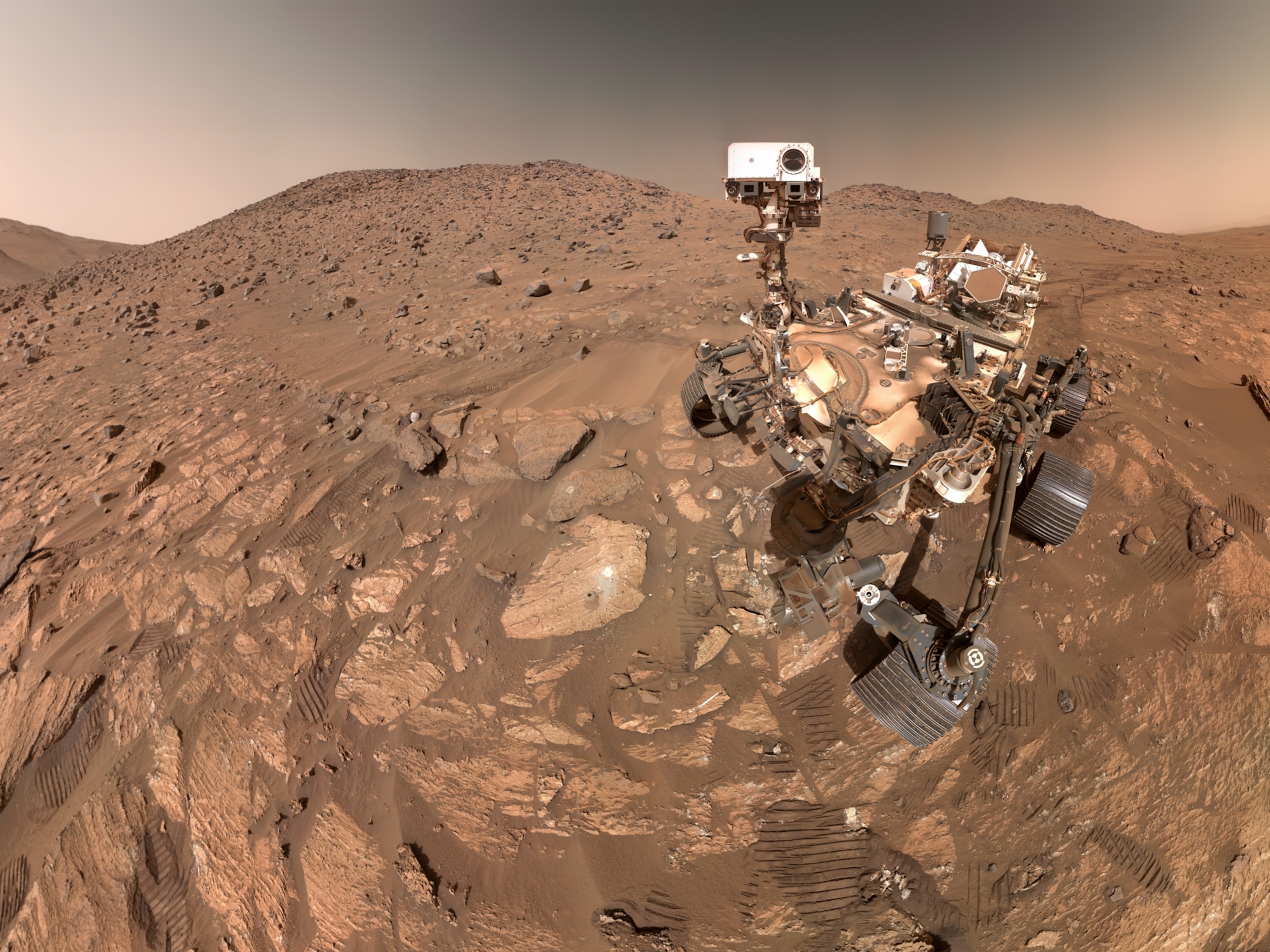
Strange Lights in Mars Photos Are Not Alien Bonfires
There are simple explanations for bright spots seen in two recent photos from Mars.
Recent photos taken by NASA's Mars rover might appear to show a gleaming alien bonfire burning in the distance—at least according to some Internet loonies—but that's not exactly what's happening.
Fact is, there still isn't any evidence for life on Mars. None.
The provocative, shiny smears of light appear in two images snapped by rover Curiosity's navigation camera, one on April 2 and the other on April 3, provoking excitement among some in the UFO-spotting crowd.
The photos come courtesy of the camera's right eye and show nearly vertical bright smudges emerging from a spot near the horizon. Photos of the same spot shot by the camera's left eye, meanwhile, show no such things.
Rather than emanating from an underground Martian disco, the bright spots are probably caused by cosmic rays colliding with the rover's camera or by glinting rocks reflecting the Martian sunlight, said NASA's Jet Propulsion Laboratory's Justin Maki, lead imaging scientist for the Curiosity team.
He said that glimmers appearing in similar spots on two consecutive days are oddly coincidental.
Cosmic Rays
It turns out that both cosmic rays and glinting rocks are pretty common on Mars. They've been spotted before. Such rocks have been seen in images sent by several of NASA's Mars rovers, and cosmic rays appear in images that Curiosity sends to Earth each week.
Maki said that one percent of those hundreds of weekly images might include cosmic ray-induced bright spots. But the junked-up pixels normally don't cause much of a stir.
"You'll see cosmic rays every two or three days. Certainly at least once a week," Maki said. "The reason we see so many is because Mars's atmosphere is thinner: It doesn't block as much cosmic radiation as Earth's does."
Cosmic rays are charged particles that fly through the universe in every direction all the time. Every so often they'll collide with something like a camera. One sign of a cosmic ray hit, Maki said, is the appearance of the ray in images taken by one of Curiosity's eyes but not the other.
Glinting rocks, on the other hand, could easily reflect Martian sunlight. But it's not clear why the glimmer would appear just in the right-eye images, Maki said. He notes that one of the left-eye images is obscured, and he says it's not impossible for a glimmer to show up on only one side.
"I'd probably lean toward cosmic rays," Maki said. "But I'd like to keep an open mind."
No Signs of Life
No matter how much we might want our planetary next-door neighbor to host some form of life (let's face it, the solar system would feel a lot less lonely), there's still no evidence for anything living on the red planet.
Of course, that doesn't stop some folks from believing.
This week, Scott Waring posted one of the rover's recent photos to a blog called UFO Sightings Daily.
"This could indicate there there [sic] is intelligent life below the ground and uses light as we do," Waring wrote, referring to the bright spots. The image then made its way around the Internet, prompting explanations from NASA scientists and some wild lay speculation about Martian life.
Finding a Martian bonfire would obviously be spectacular. So would seeing a giant, artificial face on Mars, uncovering alien fossils that hitchhiked to Earth aboard a piece of ejected red planet, or discovering that a shiny, doughnut-shaped rock found by NASA's rover Opportunity is actually alive.
But none of these recent Internet memes are true.
Follow Nadia Drake on Twitter.




